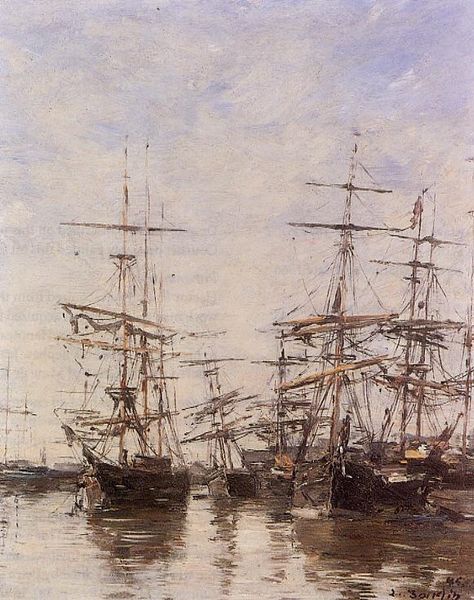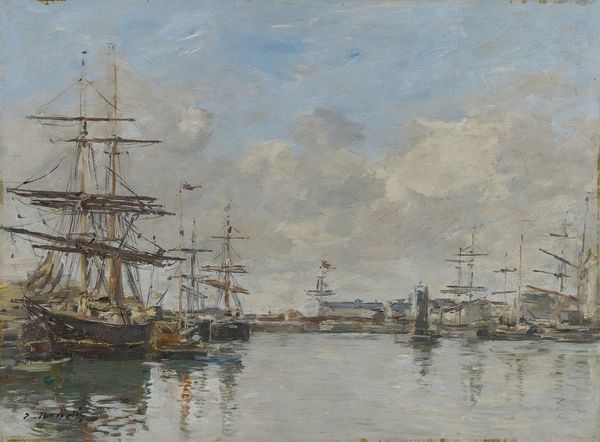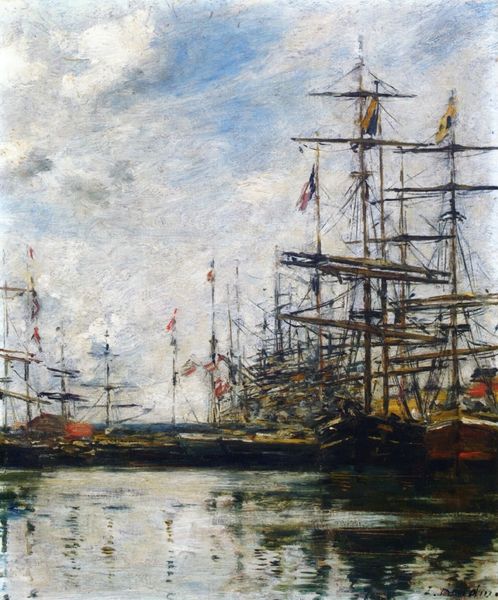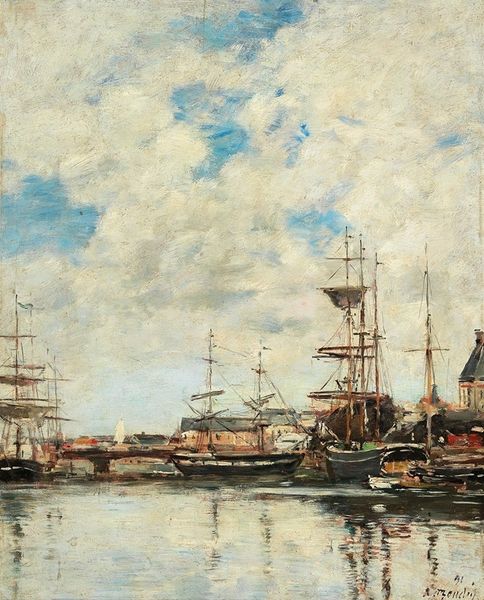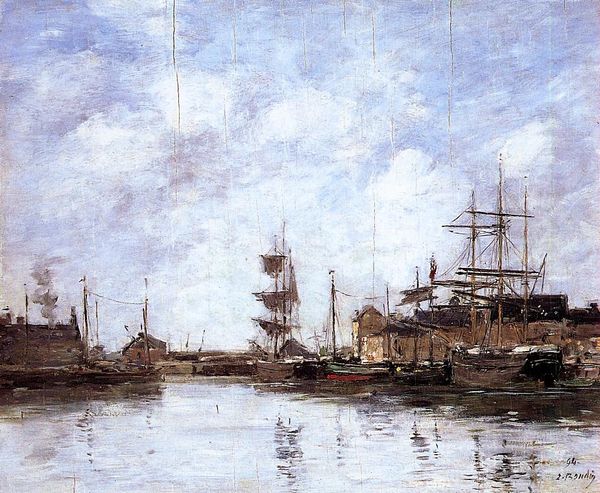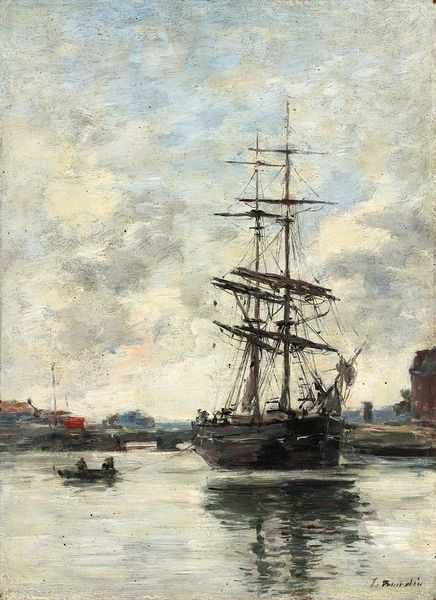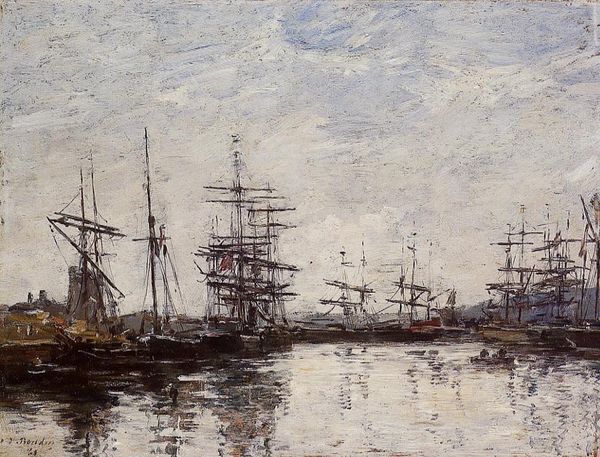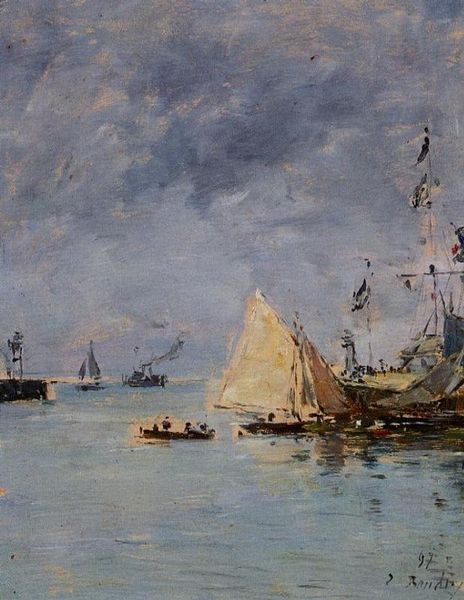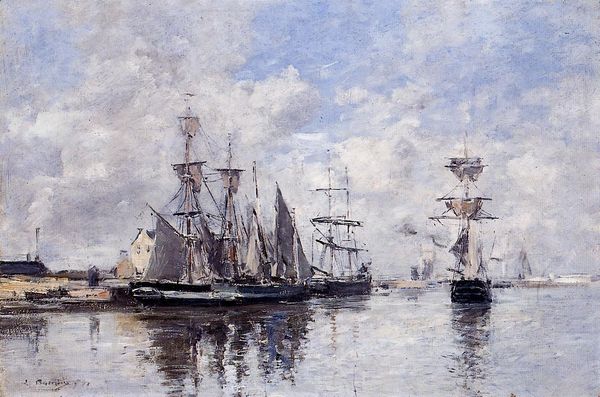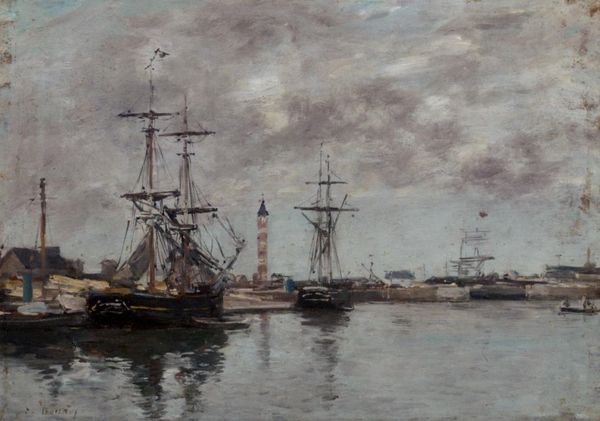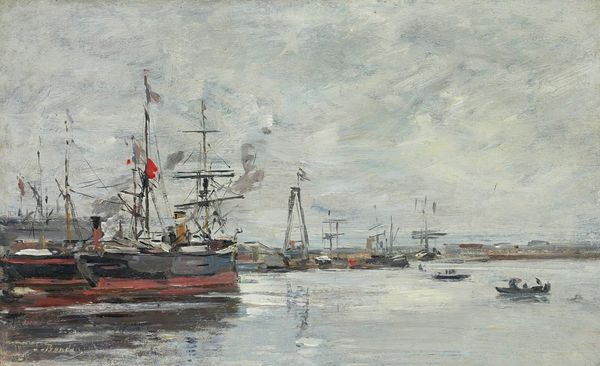
Copyright: Public domain
Curator: Eugène Boudin’s "The Deauville Basin," created in 1891, captures a moment in the bustling harbor. There’s a strong emphasis on maritime activity with several ships dominating the scene. Editor: It's undeniably evocative. The muted tones give it this serene, almost melancholic feeling. The ships seem almost ghostly against the hazy sky. Curator: The harbor scene becomes a stage where commerce and industry play out in full public view, framed by emerging leisure activities of this popular seaside location. Editor: Absolutely. And when considering the period, the late 19th century, it's impossible not to consider colonialism's impact on maritime trade and global exchange. Ships were not only about trade but about projecting imperial power. Curator: That's a crucial point. It's a visual document reflecting France's economic and colonial ambitions, even as it depicts what looks like a quiet scene. How these docks influenced the local residents could also tell quite a different story. Editor: Boudin certainly immortalized these vessels in oil paint. His commitment to rendering plein air paintings, these atmospheric conditions, can also be interpreted through labor history by portraying it so visibly in such a commercial space. Curator: His style, his technique certainly lends itself to a very public kind of spectacle that he shares here. You sense this kind of spectacle also was aimed at people who wanted to see or could recognize how those industrial, those commercial infrastructures had consequences on daily life. Editor: I see a city being built at once from industry as well as tourism, and these processes aren't possible without an awareness of political shifts. With new ships being built from the past, who profits and who loses from such exchanges? Curator: A question to ask in examining this harbor’s depiction of ships whose silhouettes evoke a historical trade under new regulations and technology during Boudin's time, thus making it so modern, is in which way has the labor been exploited and extracted. Editor: Exactly. Boudin captures more than just ships; it freezes a specific moment rife with both economic promise and unspoken power dynamics. Curator: A layered look, indeed. I'm struck by how such an aesthetic impression resonates profoundly through societal changes. Editor: It shows us how art can speak across different registers, reflecting a society at a crossroads.
Comments
No comments
Be the first to comment and join the conversation on the ultimate creative platform.

